Pear nutrition facts
The pear is any of several tree and shrub species of genus Pyrus, in the family Rosaceae .
Pear is also the name of the pomaceous fruit of the trees. Several species of pear are valued for their edible fruit and juices, while others are cultivated as trees.
The pear is native to coastal and mildly temperate regions of western Europe and north Africa east right across Asia 1. It is a medium-sized tree, reaching 10–17 meters (33–56 ft) tall, often with a tall, narrow crown; a few species are shrubby.
Raw pear is 84% water, 15% carbohydrates and contains negligible protein and fat (Tables 1 to 6). A pear in a 100 g serving (small pear) supplies carbohydrates and 57 Calories, and is a good source of dietary fiber. The pear skin contains the majority of the fiber found in a pear, so enjoy the skin for added flavor, texture, and nutrients. Pears skin also naturally contain phytonutrients and other antioxidants, a variety of which are found in the vibrantly colored skins of the different pear varieties. Choose a mix of colors for an added benefit.
Pears are also a good source of vitamin C. Each medium-sized pear contains approximately 7 mg, which is 10% of the daily value. Plus, pears are sodium free, fat-free and cholesterol free, otherwise pear provides no essential nutrients in significant amounts. Diets low in saturated fat and cholesterol and rich in fruits, vegetables, and whole grains that contain fiber, particularly soluble fiber, may reduce the risk for heart disease, a disease associated with many factors.
Are the red pears different from green pears and do they have different flavors ?
Red pears are a natural variation developed from their green counterpart. Generally the red pears will taste very similar to their green counterpart. For example, a red Bartlett will be similar in taste to a green Bartlett pear, and a red Anjou will taste similar to green Anjou. Pear flavor does change subtly from variety to variety.
Which is the sweetest pear ?
All pears are sweet, each in their own subtle way. Many people consider Comice and Seckel to have a rich sweetness to them. Anjou is more of a clean sweetness, and Bosc has a honey sweetness. Be sure to ripen the pears before eating – this allows the sugars to develop in the pear to their sweetest and juiciest best.
Why are some pears brown or have brown spots ?
Several varieties are naturally brown or have spots called russeting. It is normal and naturally occurring for the variety. You don’t need to peel the skin on russeted pears – take a bite and you’ll see that the flavor is fantastic. You cannot judge a pear by its color, as most don’t change color as they ripen and the russeted varieties are just as sweet as their red, yellow, and green counterparts.
Which pear is best for cooking ?
Firmer varieties such as Bosc, Anjou or Concorde are best for heated applications like poaching, baking, and grilling. Because their flesh is denser, they hold their shape better, and their flavor is not overpowered by the flavors of other cooking ingredients. If a recipe calls for a certain variety of pear, we suggest you use the variety suggested. The pears that are NOT optimal for heated applications are Bartlett, Red Bartlett, Starkrimson, and Comice, as their flavor and texture are at their peak when ripe and fresh. Their consistency may over-soften and their flavor may diminish when heated.
Do all of the pears have different flavors ?
The pears grown in Oregon and Washington have many subtle and different flavors and textures. In brief:
- Anjou – refreshingly sweet and juicy with a hint of citrus
- Red Anjou – aromatic, juicy, fresh and sweet
- Bartlett – signature pear flavor with abundant juice
- Red Bartlett – juicy and sweet with a floral essence
- Bosc – crisp and woodsy with a honey sweetness
- Comice – succulent, buttery, and exceptionally sweet
- Concorde – crunchy and earthy with a hint of vanilla
- Forelle – crisp, tangy, and refreshingly sweet
- Seckel – bite-sized, crunchy and ultra-sweet
- Starkrimson – aromatic, moist and sweet with a floral essence
Figure 1. Bartlett pear

Table 1. Pear (raw) nutrition facts
Nutrient | Unit | Value per 100 g | cup, slices 140 g | cup, cubes 161 g | small 148 g | medium 178 g | large 230 g | ||||||||||||
|---|---|---|---|---|---|---|---|---|---|---|---|---|---|---|---|---|---|---|---|
| Approximates | |||||||||||||||||||
| Water | g | 83.96 | 117.54 | 135.18 | 124.26 | 149.45 | 193.11 | ||||||||||||
| Energy | kcal | 57 | 80 | 92 | 84 | 101 | 131 | ||||||||||||
| Protein | g | 0.36 | 0.50 | 0.58 | 0.53 | 0.64 | 0.83 | ||||||||||||
| Total lipid (fat) | g | 0.14 | 0.20 | 0.23 | 0.21 | 0.25 | 0.32 | ||||||||||||
| Carbohydrate, by difference | g | 15.23 | 21.32 | 24.52 | 22.54 | 27.11 | 35.03 | ||||||||||||
| Fiber, total dietary | g | 3.1 | 4.3 | 5.0 | 4.6 | 5.5 | 7.1 | ||||||||||||
| Sugars, total | g | 9.75 | 13.65 | 15.70 | 14.43 | 17.36 | 22.43 | ||||||||||||
| Minerals | |||||||||||||||||||
| Calcium, Ca | mg | 9 | 13 | 14 | 13 | 16 | 21 | ||||||||||||
| Iron, Fe | mg | 0.18 | 0.25 | 0.29 | 0.27 | 0.32 | 0.41 | ||||||||||||
| Magnesium, Mg | mg | 7 | 10 | 11 | 10 | 12 | 16 | ||||||||||||
| Phosphorus, P | mg | 12 | 17 | 19 | 18 | 21 | 28 | ||||||||||||
| Potassium, K | mg | 116 | 162 | 187 | 172 | 206 | 267 | ||||||||||||
| Sodium, Na | mg | 1 | 1 | 2 | 1 | 2 | 2 | ||||||||||||
| Zinc, Zn | mg | 0.10 | 0.14 | 0.16 | 0.15 | 0.18 | 0.23 | ||||||||||||
| Vitamins | |||||||||||||||||||
| Vitamin C, total ascorbic acid | mg | 4.3 | 6.0 | 6.9 | 6.4 | 7.7 | 9.9 | ||||||||||||
| Thiamin | mg | 0.012 | 0.017 | 0.019 | 0.018 | 0.021 | 0.028 | ||||||||||||
| Riboflavin | mg | 0.026 | 0.036 | 0.042 | 0.038 | 0.046 | 0.060 | ||||||||||||
| Niacin | mg | 0.161 | 0.225 | 0.259 | 0.238 | 0.287 | 0.370 | ||||||||||||
| Vitamin B-6 | mg | 0.029 | 0.041 | 0.047 | 0.043 | 0.052 | 0.067 | ||||||||||||
| Folate, DFE | µg | 7 | 10 | 11 | 10 | 12 | 16 | ||||||||||||
| Vitamin B-12 | µg | 0.00 | 0.00 | 0.00 | 0.00 | 0.00 | 0.00 | ||||||||||||
| Vitamin A, RAE | µg | 1 | 1 | 2 | 1 | 2 | 2 | ||||||||||||
| Vitamin A, IU | IU | 25 | 35 | 40 | 37 | 44 | 58 | ||||||||||||
| Vitamin E (alpha-tocopherol) | mg | 0.12 | 0.17 | 0.19 | 0.18 | 0.21 | 0.28 | ||||||||||||
| Vitamin D (D2 + D3) | µg | 0.0 | 0.0 | 0.0 | 0.0 | 0.0 | 0.0 | ||||||||||||
| Vitamin D | IU | 0 | 0 | 0 | 0 | 0 | 0 | ||||||||||||
| Vitamin K (phylloquinone) | µg | 4.4 | 6.2 | 7.1 | 6.5 | 7.8 | 10.1 | ||||||||||||
| Lipids | |||||||||||||||||||
| Fatty acids, total saturated | g | 0.022 | 0.031 | 0.035 | 0.033 | 0.039 | 0.051 | ||||||||||||
| Fatty acids, total monounsaturated | g | 0.084 | 0.118 | 0.135 | 0.124 | 0.150 | 0.193 | ||||||||||||
| Fatty acids, total polyunsaturated | g | 0.094 | 0.132 | 0.151 | 0.139 | 0.167 | 0.216 | ||||||||||||
| Fatty acids, total trans | g | 0.000 | 0.000 | 0.000 | 0.000 | 0.000 | 0.000 | ||||||||||||
| Cholesterol | mg | 0 | 0 | 0 | 0 | 0 | 0 | ||||||||||||
| Other | |||||||||||||||||||
| Caffeine | mg | 0 | 0 | 0 | 0 | 0 | 0 | ||||||||||||
Figure 2. Asian Nashi Pear
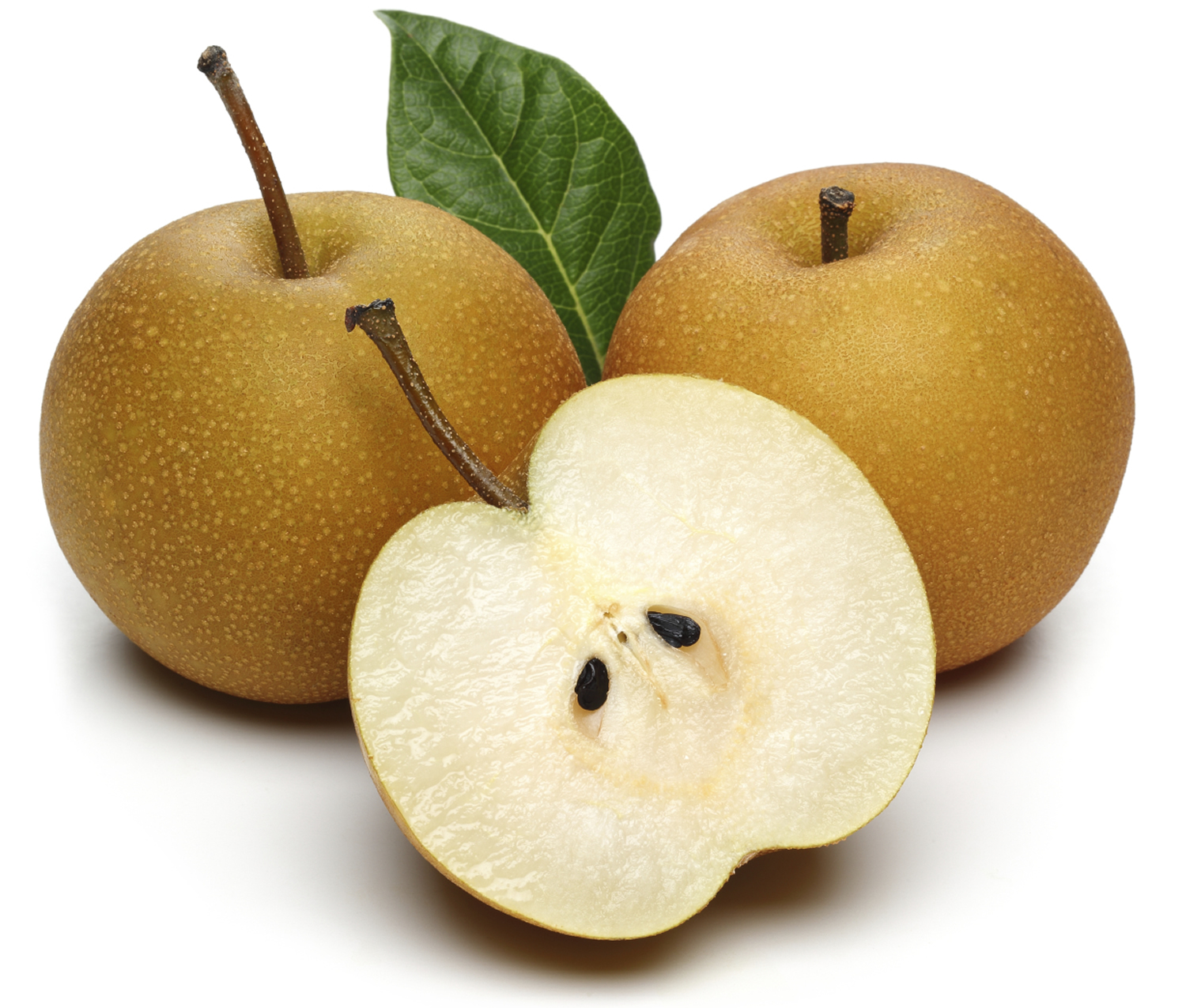
Table 2. Pears Asian – Nashi Pear (raw) nutrition facts
Nutrient | Unit | Value per 100 g | fruit 2-1/4″ high x 2-1/2″ dia 122 g | fruit 3-3/8″ high x 3″ diameter 275 g | |||||||||||||||
|---|---|---|---|---|---|---|---|---|---|---|---|---|---|---|---|---|---|---|---|
| Approximates | |||||||||||||||||||
| Water | g | 88.25 | 107.67 | 242.69 | |||||||||||||||
| Energy | kcal | 42 | 51 | 116 | |||||||||||||||
| Protein | g | 0.50 | 0.61 | 1.38 | |||||||||||||||
| Total lipid (fat) | g | 0.23 | 0.28 | 0.63 | |||||||||||||||
| Carbohydrate, by difference | g | 10.65 | 12.99 | 29.29 | |||||||||||||||
| Fiber, total dietary | g | 3.6 | 4.4 | 9.9 | |||||||||||||||
| Sugars, total | g | 7.05 | 8.60 | 19.39 | |||||||||||||||
| Minerals | |||||||||||||||||||
| Calcium, Ca | mg | 4 | 5 | 11 | |||||||||||||||
| Iron, Fe | mg | 0.00 | 0.00 | 0.00 | |||||||||||||||
| Magnesium, Mg | mg | 8 | 10 | 22 | |||||||||||||||
| Phosphorus, P | mg | 11 | 13 | 30 | |||||||||||||||
| Potassium, K | mg | 121 | 148 | 333 | |||||||||||||||
| Sodium, Na | mg | 0 | 0 | 0 | |||||||||||||||
| Zinc, Zn | mg | 0.02 | 0.02 | 0.06 | |||||||||||||||
| Vitamins | |||||||||||||||||||
| Vitamin C, total ascorbic acid | mg | 3.8 | 4.6 | 10.4 | |||||||||||||||
| Thiamin | mg | 0.009 | 0.011 | 0.025 | |||||||||||||||
| Riboflavin | mg | 0.010 | 0.012 | 0.028 | |||||||||||||||
| Niacin | mg | 0.219 | 0.267 | 0.602 | |||||||||||||||
| Vitamin B-6 | mg | 0.022 | 0.027 | 0.060 | |||||||||||||||
| Folate, DFE | µg | 8 | 10 | 22 | |||||||||||||||
| Vitamin B-12 | µg | 0.00 | 0.00 | 0.00 | |||||||||||||||
| Vitamin A, RAE | µg | 0 | 0 | 0 | |||||||||||||||
| Vitamin A, IU | IU | 0 | 0 | 0 | |||||||||||||||
| Vitamin E (alpha-tocopherol) | mg | 0.12 | 0.15 | 0.33 | |||||||||||||||
| Vitamin D (D2 + D3) | µg | 0.0 | 0.0 | 0.0 | |||||||||||||||
| Vitamin D | IU | 0 | 0 | 0 | |||||||||||||||
| Vitamin K (phylloquinone) | µg | 4.5 | 5.5 | 12.4 | |||||||||||||||
| Lipids | |||||||||||||||||||
| Fatty acids, total saturated | g | 0.012 | 0.015 | 0.033 | |||||||||||||||
| Fatty acids, total monounsaturated | g | 0.049 | 0.060 | 0.135 | |||||||||||||||
| Fatty acids, total polyunsaturated | g | 0.055 | 0.067 | 0.151 | |||||||||||||||
| Fatty acids, total trans | g | 0.000 | 0.000 | 0.000 | |||||||||||||||
| Cholesterol | mg | 0 | 0 | 0 | |||||||||||||||
| Other | |||||||||||||||||||
| Caffeine | mg | 0 | 0 | 0 | |||||||||||||||
Figure 3. Red Bartlett Pears

Table 3. Pears Bartlett (raw) nutrition facts
Nutrient | Unit | Value per 100 g | cup, sliced 140 g | small 152 g | medium 177 g | large 227 g | |||||||||||||
|---|---|---|---|---|---|---|---|---|---|---|---|---|---|---|---|---|---|---|---|
| Approximates | |||||||||||||||||||
| Water | g | 84.14 | 117.80 | 127.89 | 148.93 | 191.00 | |||||||||||||
| Energy | kcal | 63 | 88 | 96 | 112 | 143 | |||||||||||||
| Protein | g | 0.39 | 0.55 | 0.59 | 0.69 | 0.89 | |||||||||||||
| Total lipid (fat) | g | 0.16 | 0.22 | 0.24 | 0.28 | 0.36 | |||||||||||||
| Carbohydrate, by difference | g | 15.01 | 21.01 | 22.82 | 26.57 | 34.07 | |||||||||||||
| Fiber, total dietary | g | 3.1 | 4.3 | 4.7 | 5.5 | 7.0 | |||||||||||||
| Sugars, total | g | 9.69 | 13.57 | 14.73 | 17.15 | 22.00 | |||||||||||||
| Minerals | |||||||||||||||||||
| Calcium, Ca | mg | 9 | 13 | 14 | 16 | 20 | |||||||||||||
| Iron, Fe | mg | 0.19 | 0.27 | 0.29 | 0.34 | 0.43 | |||||||||||||
| Magnesium, Mg | mg | 6 | 8 | 9 | 11 | 14 | |||||||||||||
| Phosphorus, P | mg | 11 | 15 | 17 | 19 | 25 | |||||||||||||
| Potassium, K | mg | 101 | 141 | 154 | 179 | 229 | |||||||||||||
| Sodium, Na | mg | 1 | 1 | 2 | 2 | 2 | |||||||||||||
| Zinc, Zn | mg | 0.08 | 0.11 | 0.12 | 0.14 | 0.18 | |||||||||||||
| Vitamins | |||||||||||||||||||
| Vitamin C, total ascorbic acid | mg | 4.4 | 6.2 | 6.7 | 7.8 | 10.0 | |||||||||||||
| Thiamin | mg | 0.012 | 0.017 | 0.018 | 0.021 | 0.027 | |||||||||||||
| Riboflavin | mg | 0.026 | 0.036 | 0.040 | 0.046 | 0.059 | |||||||||||||
| Niacin | mg | 0.164 | 0.230 | 0.249 | 0.290 | 0.372 | |||||||||||||
| Vitamin B-6 | mg | 0.026 | 0.036 | 0.040 | 0.046 | 0.059 | |||||||||||||
| Vitamin A, RAE | µg | 1 | 1 | 2 | 2 | 2 | |||||||||||||
| Vitamin A, IU | IU | 28 | 39 | 43 | 50 | 64 | |||||||||||||
| Vitamin E (alpha-tocopherol) | mg | 0.12 | 0.17 | 0.18 | 0.21 | 0.27 | |||||||||||||
| Vitamin K (phylloquinone) | µg | 3.8 | 5.3 | 5.8 | 6.7 | 8.6 | |||||||||||||
| Lipids | |||||||||||||||||||
| Fatty acids, total trans | g | 0.000 | 0.000 | 0.000 | 0.000 | 0.000 | |||||||||||||
Figure 4. Pear Red Anjou
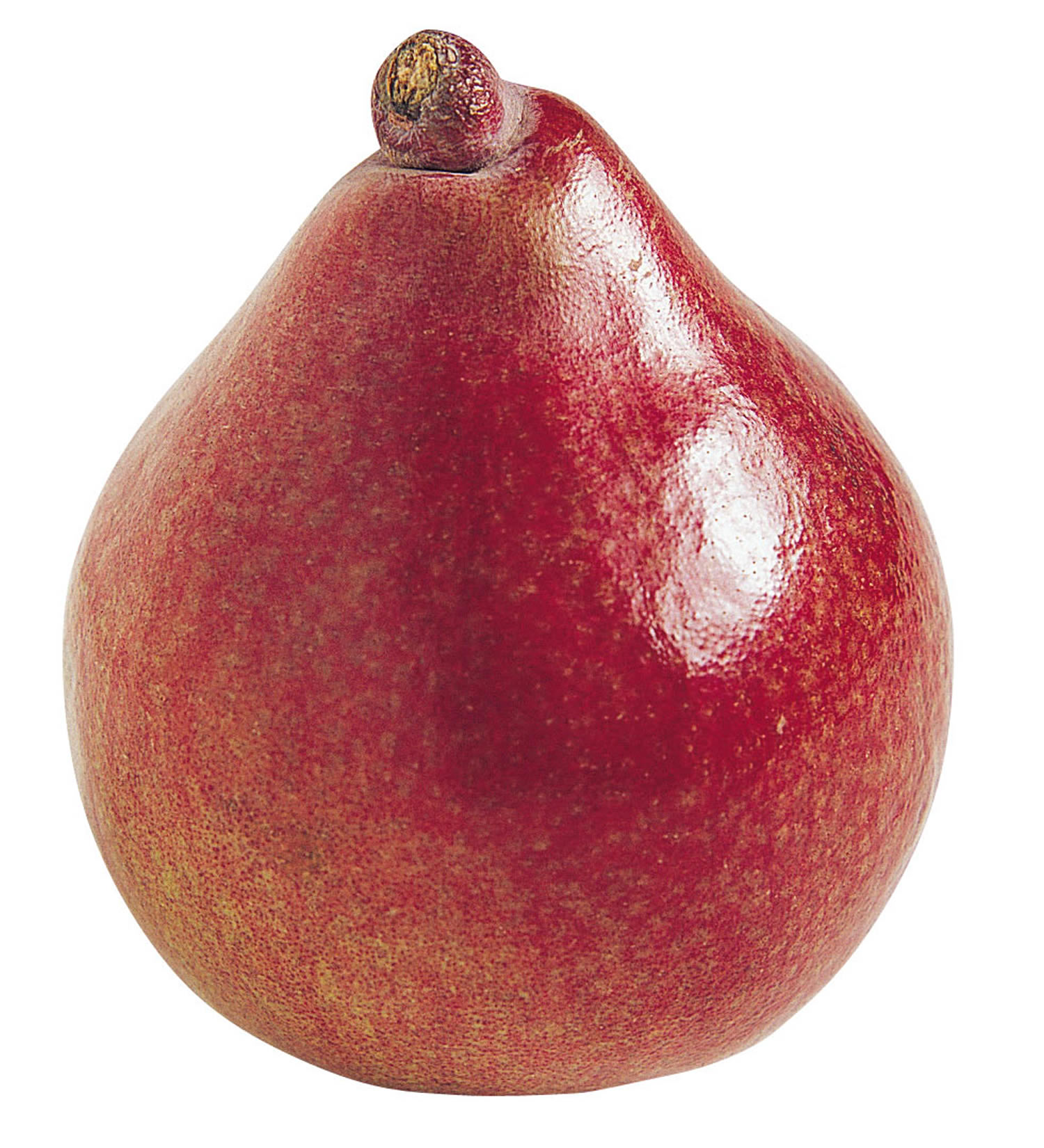
Table 4. Pears Red Anjou (raw) nutrition facts
Nutrient | Unit | Value per 100 g | small 126 g | medium 157 g | large 223 g | cup, sliced 140 g | |||||||||||||
|---|---|---|---|---|---|---|---|---|---|---|---|---|---|---|---|---|---|---|---|
| Approximates | |||||||||||||||||||
| Water | g | 84.24 | 106.14 | 132.26 | 187.86 | 117.94 | |||||||||||||
| Energy | kcal | 62 | 78 | 97 | 138 | 87 | |||||||||||||
| Protein | g | 0.33 | 0.42 | 0.52 | 0.74 | 0.46 | |||||||||||||
| Total lipid (fat) | g | 0.14 | 0.18 | 0.22 | 0.31 | 0.20 | |||||||||||||
| Carbohydrate, by difference | g | 14.94 | 18.82 | 23.46 | 33.32 | 20.92 | |||||||||||||
| Fiber, total dietary | g | 3.0 | 3.8 | 4.7 | 6.7 | 4.2 | |||||||||||||
| Sugars, total | g | 9.54 | 12.02 | 14.98 | 21.27 | 13.36 | |||||||||||||
| Minerals | |||||||||||||||||||
| Calcium, Ca | mg | 11 | 14 | 17 | 25 | 15 | |||||||||||||
| Iron, Fe | mg | 0.19 | 0.24 | 0.30 | 0.42 | 0.27 | |||||||||||||
| Magnesium, Mg | mg | 7 | 9 | 11 | 16 | 10 | |||||||||||||
| Phosphorus, P | mg | 13 | 16 | 20 | 29 | 18 | |||||||||||||
| Potassium, K | mg | 123 | 155 | 193 | 274 | 172 | |||||||||||||
| Sodium, Na | mg | 1 | 1 | 2 | 2 | 1 | |||||||||||||
| Zinc, Zn | mg | 0.13 | 0.16 | 0.20 | 0.29 | 0.18 | |||||||||||||
| Vitamins | |||||||||||||||||||
| Vitamin C, total ascorbic acid | mg | 5.2 | 6.6 | 8.2 | 11.6 | 7.3 | |||||||||||||
| Thiamin | mg | 0.012 | 0.015 | 0.019 | 0.027 | 0.017 | |||||||||||||
| Riboflavin | mg | 0.028 | 0.035 | 0.044 | 0.062 | 0.039 | |||||||||||||
| Niacin | mg | 0.162 | 0.204 | 0.254 | 0.361 | 0.227 | |||||||||||||
| Vitamin B-6 | mg | 0.039 | 0.049 | 0.061 | 0.087 | 0.055 | |||||||||||||
| Vitamin A, RAE | µg | 1 | 1 | 2 | 2 | 1 | |||||||||||||
| Vitamin A, IU | IU | 24 | 30 | 38 | 54 | 34 | |||||||||||||
| Vitamin E (alpha-tocopherol) | mg | 0.12 | 0.15 | 0.19 | 0.27 | 0.17 | |||||||||||||
| Vitamin K (phylloquinone) | µg | 4.9 | 6.2 | 7.7 | 10.9 | 6.9 | |||||||||||||
| Lipids | |||||||||||||||||||
| Fatty acids, total trans | g | 0.000 | 0.000 | 0.000 | 0.000 | 0.000 | |||||||||||||
Figure 5. Pear Green Anjou

Table 5. Pears Green Anjou (raw) nutrition facts
Nutrient | Unit | Value per 100 g | cup, sliced 140 g | small 172 g | medium 202 g | large 242 g | |||||||||||||
|---|---|---|---|---|---|---|---|---|---|---|---|---|---|---|---|---|---|---|---|
| Approximates | |||||||||||||||||||
| Water | g | 83.31 | 116.63 | 143.29 | 168.29 | 201.61 | |||||||||||||
| Energy | kcal | 66 | 92 | 114 | 133 | 160 | |||||||||||||
| Protein | g | 0.44 | 0.62 | 0.76 | 0.89 | 1.06 | |||||||||||||
| Total lipid (fat) | g | 0.10 | 0.14 | 0.17 | 0.20 | 0.24 | |||||||||||||
| Carbohydrate, by difference | g | 15.79 | 22.11 | 27.16 | 31.90 | 38.21 | |||||||||||||
| Fiber, total dietary | g | 3.1 | 4.3 | 5.3 | 6.3 | 7.5 | |||||||||||||
| Sugars, total | g | 9.73 | 13.62 | 16.74 | 19.65 | 23.55 | |||||||||||||
| Minerals | |||||||||||||||||||
| Calcium, Ca | mg | 11 | 15 | 19 | 22 | 27 | |||||||||||||
| Iron, Fe | mg | 0.24 | 0.34 | 0.41 | 0.48 | 0.58 | |||||||||||||
| Magnesium, Mg | mg | 7 | 10 | 12 | 14 | 17 | |||||||||||||
| Phosphorus, P | mg | 13 | 18 | 22 | 26 | 31 | |||||||||||||
| Potassium, K | mg | 127 | 178 | 218 | 257 | 307 | |||||||||||||
| Sodium, Na | mg | 1 | 1 | 2 | 2 | 2 | |||||||||||||
| Zinc, Zn | mg | 0.10 | 0.14 | 0.17 | 0.20 | 0.24 | |||||||||||||
| Vitamins | |||||||||||||||||||
| Vitamin C, total ascorbic acid | mg | 4.4 | 6.2 | 7.6 | 8.9 | 10.6 | |||||||||||||
| Thiamin | mg | 0.010 | 0.014 | 0.017 | 0.020 | 0.024 | |||||||||||||
| Riboflavin | mg | 0.022 | 0.031 | 0.038 | 0.044 | 0.053 | |||||||||||||
| Niacin | mg | 0.151 | 0.211 | 0.260 | 0.305 | 0.365 | |||||||||||||
| Vitamin B-6 | mg | 0.026 | 0.036 | 0.045 | 0.053 | 0.063 | |||||||||||||
| Vitamin A, RAE | µg | 1 | 1 | 2 | 2 | 2 | |||||||||||||
| Vitamin A, IU | IU | 25 | 35 | 43 | 50 | 60 | |||||||||||||
| Vitamin E (alpha-tocopherol) | mg | 0.12 | 0.17 | 0.21 | 0.24 | 0.29 | |||||||||||||
| Vitamin K (phylloquinone) | µg | 4.3 | 6.0 | 7.4 | 8.7 | 10.4 | |||||||||||||
| Lipids | |||||||||||||||||||
| Fatty acids, total trans | g | 0.000 | 0.000 | 0.000 | 0.000 | 0.000 | |||||||||||||
Figure 6. Bosc Pear
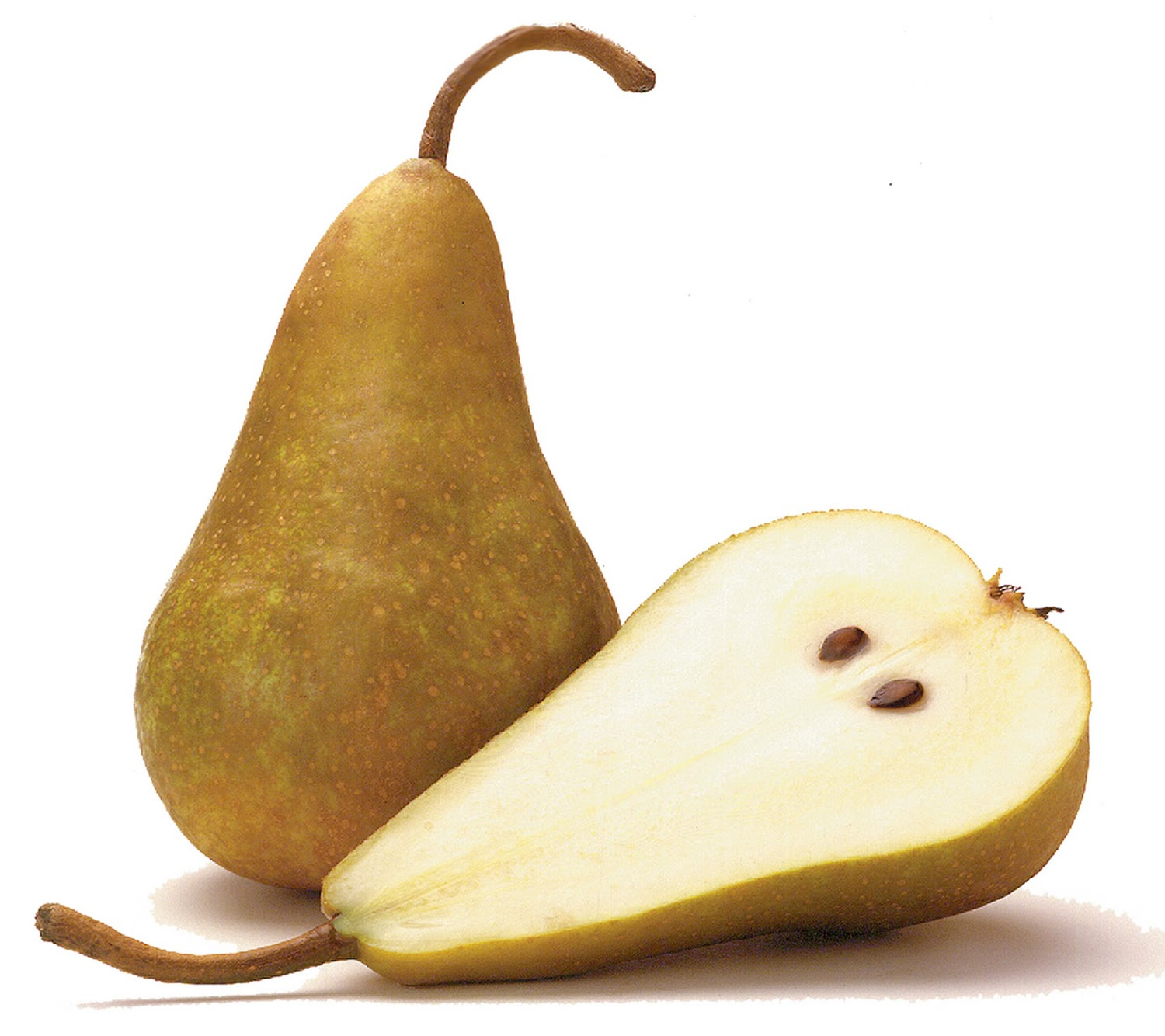
Table 6. Pears Bosc (raw) nutrition facts
Nutrient | Unit | Value per 100 g | cup, sliced 140 g | small 159 g | medium 179 g | large 219 g | |||||||||||||
|---|---|---|---|---|---|---|---|---|---|---|---|---|---|---|---|---|---|---|---|
| Approximates | |||||||||||||||||||
| Water | g | 83.18 | 116.45 | 132.26 | 148.89 | 182.16 | |||||||||||||
| Energy | kcal | 67 | 94 | 107 | 120 | 147 | |||||||||||||
| Protein | g | 0.36 | 0.50 | 0.57 | 0.64 | 0.79 | |||||||||||||
| Total lipid (fat) | g | 0.09 | 0.13 | 0.14 | 0.16 | 0.20 | |||||||||||||
| Carbohydrate, by difference | g | 16.10 | 22.54 | 25.60 | 28.82 | 35.26 | |||||||||||||
| Fiber, total dietary | g | 3.1 | 4.3 | 4.9 | 5.5 | 6.8 | |||||||||||||
| Sugars, total | g | 10.23 | 14.32 | 16.27 | 18.31 | 22.40 | |||||||||||||
| Minerals | |||||||||||||||||||
| Calcium, Ca | mg | 10 | 14 | 16 | 18 | 22 | |||||||||||||
| Iron, Fe | mg | 0.15 | 0.21 | 0.24 | 0.27 | 0.33 | |||||||||||||
| Magnesium, Mg | mg | 7 | 10 | 11 | 13 | 15 | |||||||||||||
| Phosphorus, P | mg | 14 | 20 | 22 | 25 | 31 | |||||||||||||
| Potassium, K | mg | 122 | 171 | 194 | 218 | 267 | |||||||||||||
| Sodium, Na | mg | 1 | 1 | 2 | 2 | 2 | |||||||||||||
| Zinc, Zn | mg | 0.13 | 0.18 | 0.21 | 0.23 | 0.28 | |||||||||||||
| Vitamins | |||||||||||||||||||
| Vitamin C, total ascorbic acid | mg | 2.8 | 3.9 | 4.5 | 5.0 | 6.1 | |||||||||||||
| Thiamin | mg | 0.012 | 0.017 | 0.019 | 0.021 | 0.026 | |||||||||||||
| Riboflavin | mg | 0.023 | 0.032 | 0.037 | 0.041 | 0.050 | |||||||||||||
| Niacin | mg | 0.152 | 0.213 | 0.242 | 0.272 | 0.333 | |||||||||||||
| Vitamin B-6 | mg | 0.021 | 0.029 | 0.033 | 0.038 | 0.046 | |||||||||||||
| Vitamin A, RAE | µg | 1 | 1 | 2 | 2 | 2 | |||||||||||||
| Vitamin A, IU | IU | 19 | 27 | 30 | 34 | 42 | |||||||||||||
| Vitamin E (alpha-tocopherol) | mg | 0.12 | 0.17 | 0.19 | 0.21 | 0.26 | |||||||||||||
| Vitamin K (phylloquinone) | µg | 5.2 | 7.3 | 8.3 | 9.3 | 11.4 | |||||||||||||
| Lipids | |||||||||||||||||||
| Fatty acids, total trans | g | 0.000 | 0.000 | 0.000 | 0.000 | 0.000 | |||||||||||||
Figure 7. Starkrimson pear
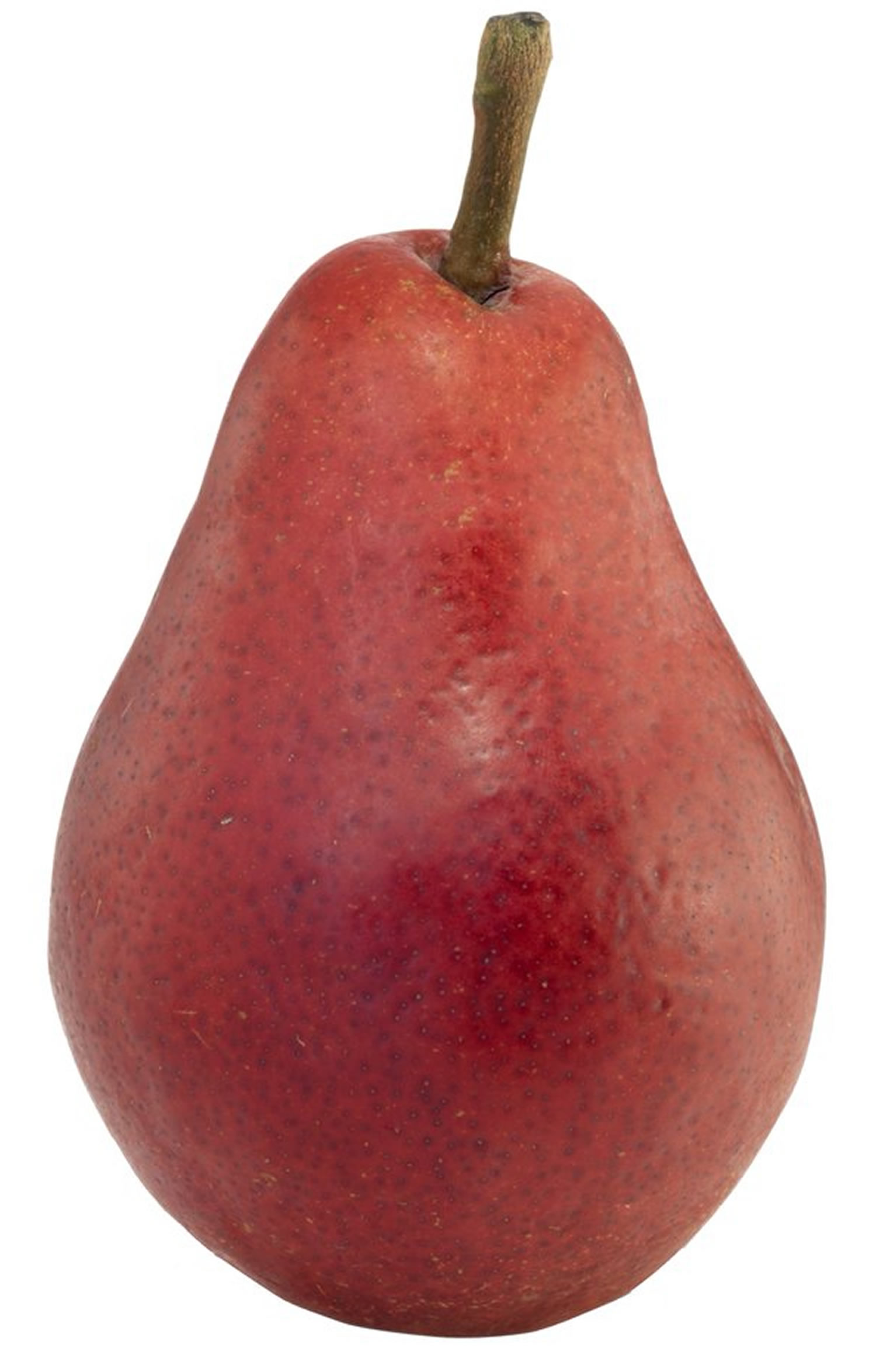
Figure 8. Seckel pear
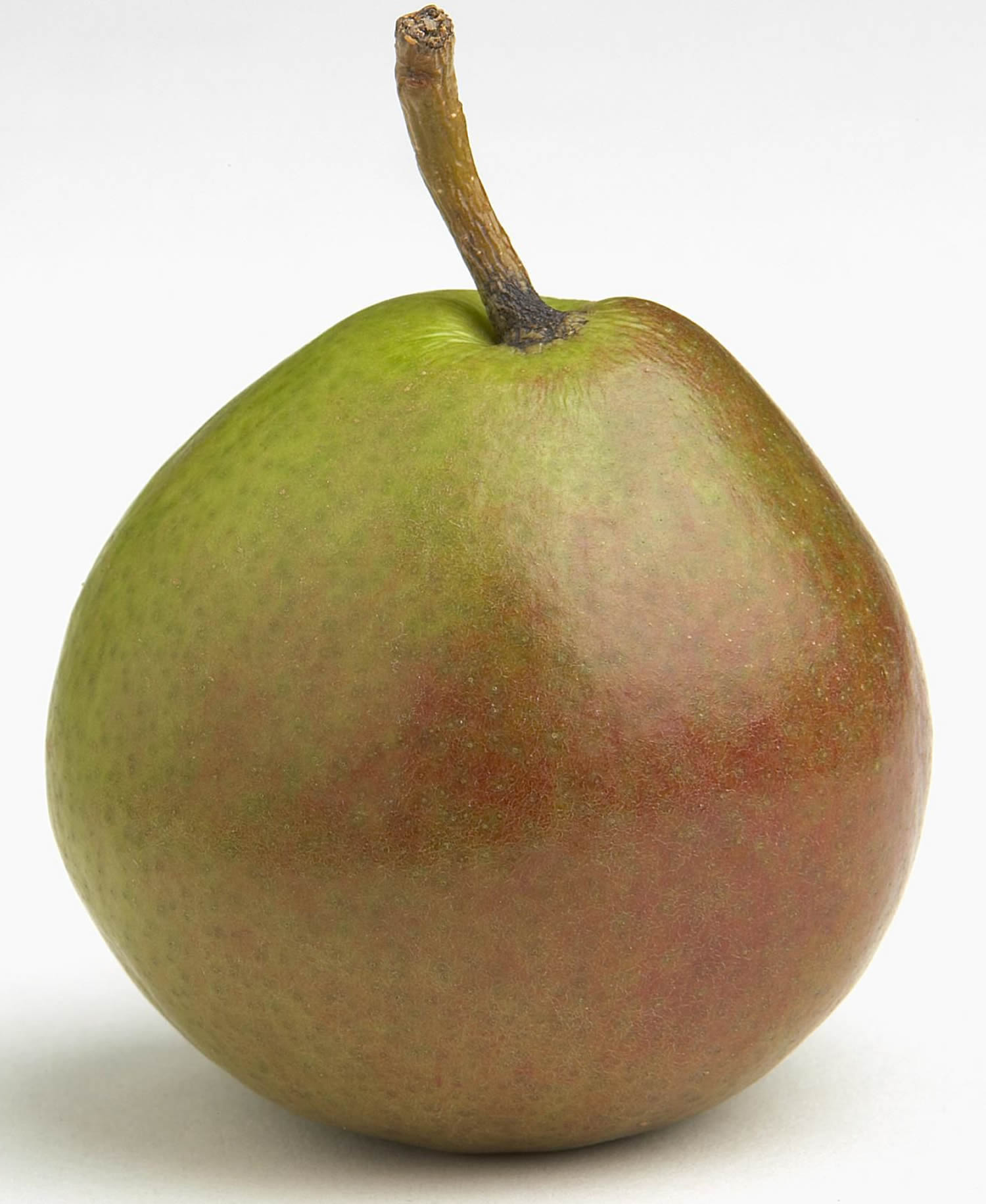
Figure 9. Forelle pears
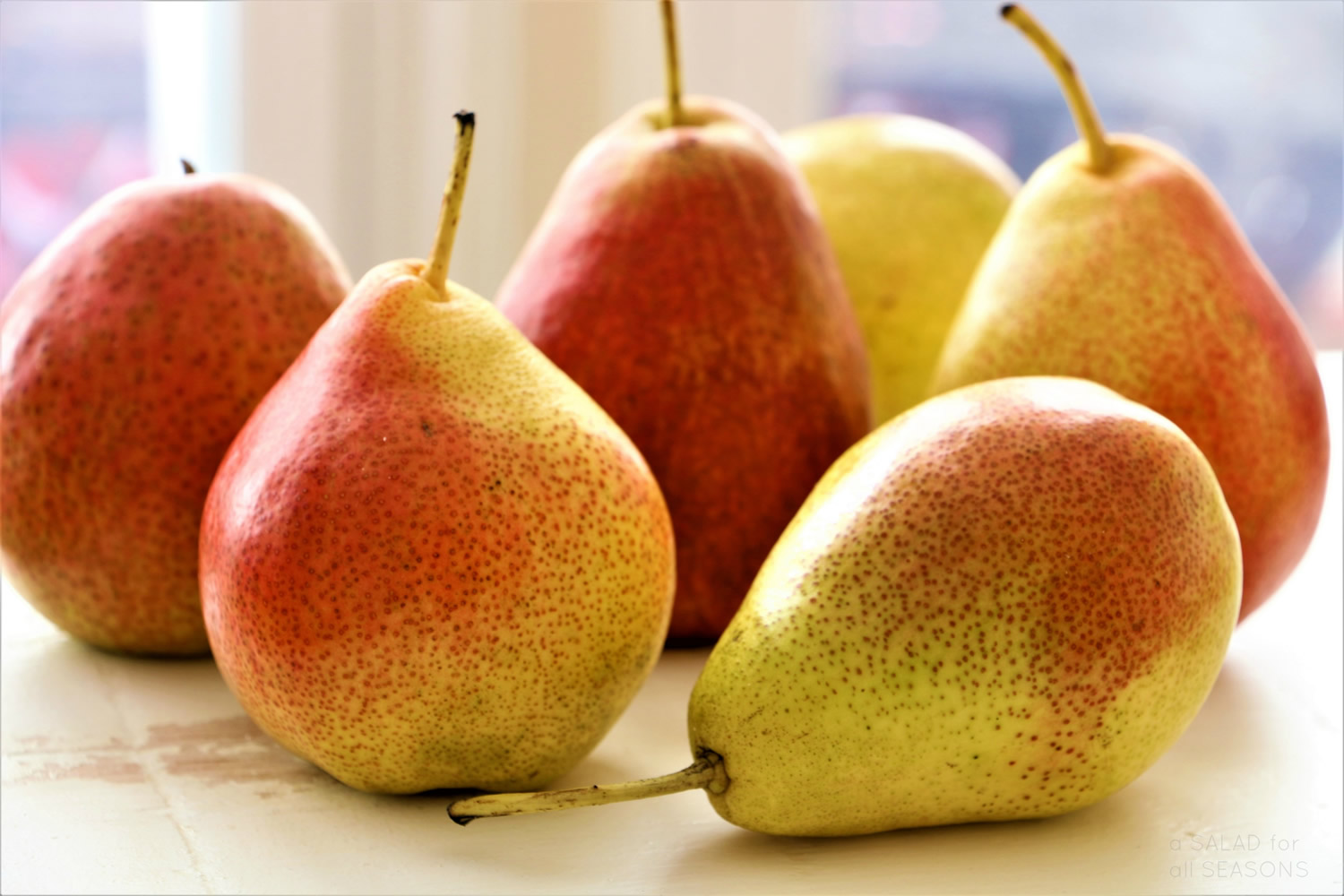
Figure 10. Comice pears
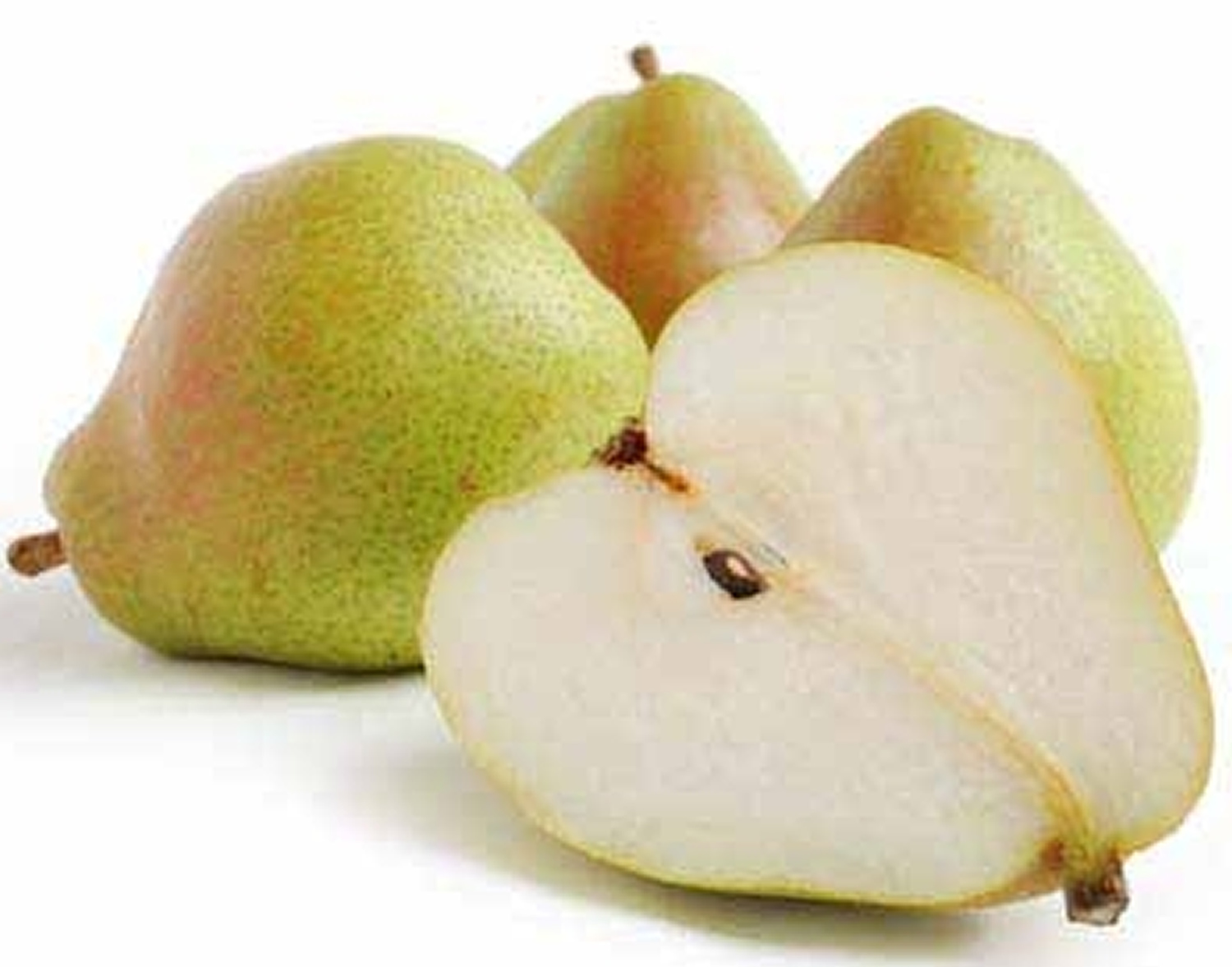
Figure 11. Concorde pears
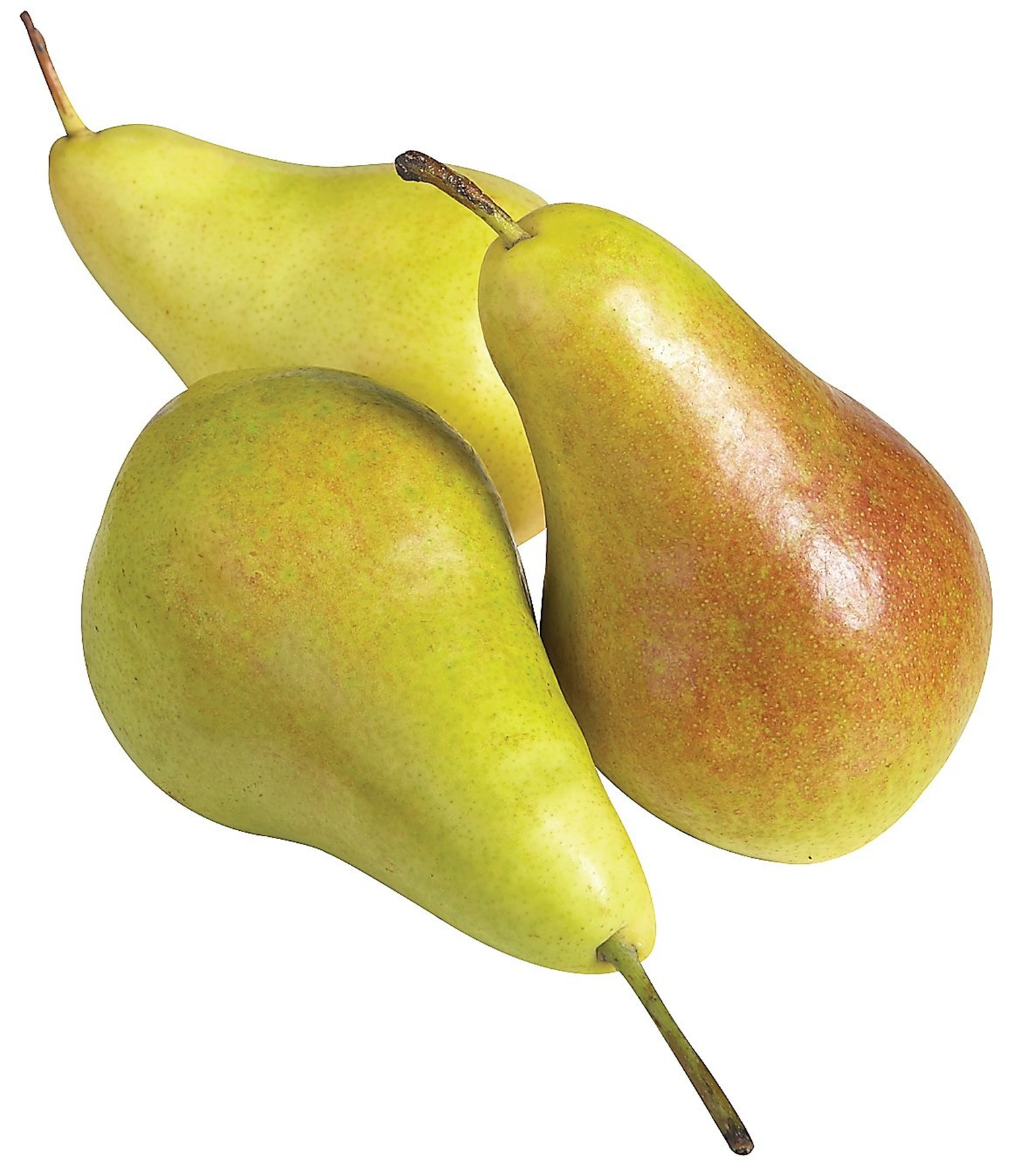
How to ripen and handle pears
A little known fact about the pear is that it is one of the few fruits that does not ripen on the tree. The pear is harvested when it is mature, but not yet ripe, and, if left at room temperature, it slowly reaches a sweet and succulent maturity as it ripens from the inside out.
As tempting as the pear might be right from the grocer’s stand, a little bit of patience and know-how will ensure the pear reaches its peak flavor.
Harvest of pears in the US begins in August with Bartletts and continues through September and October with winter varieties. Pears are harvested when the fruit is fully mature, but not yet ripe. This keeps the fruit’s flavor at a peak and stops the soft flesh from becoming gritty with deposits of lignin and other organic compounds. Pickers carefully harvest every pear by hand, and place them into special orchard bins to prevent bruising.
Packing – Once filled, the orchard bins are delivered to the packing houses and immediately cooled. This helps pears ripen consistently after consumer purchase.
So, how do you know when the pear has ripened to sweet and juicy perfection ?
Pears do not ripen well on trees. They are harvested when they are mature but unripe and need to be ripened after harvest. Bartlett pears change from green to yellow as they ripen. Non-Bartlett pears (Anjou, Bosc, Comice, Concorde, Seckel and Forelle) do not dramatically change color as they ripen. Because pears ripen from the inside out, the best way to check for ripeness is to “check the neck.” To do this, gently press near the stem with your thumb. When it gives to gentle pressure it is ripe, juicy, and ready to eat. If you wait until the pear is soft around the middle, then it will be overripe.
The best way to judge ripeness for non-Bartlett varieties is to check the neck: Apply gentle pressure to the neck (stem end) of the pear with your thumb. If it yields to pressure, it’s ripe.
Here’s what you need to do to ripen your pears:
- Leave firm, unripe pears at room temperature so that they can ripen.
- Check the neck for ripeness daily, by applying gentle pressure to the neck, or stem end, of the pear with your thumb. If it yields to pressure, then it’s ripe and ready to eat.
- Once the pear is ripe, it can be refrigerated to slow the ripening process and saved for use up to five days later.
To Prevent Browning:
- Keep a fresh fruit fresh.
- Like many fruits, the flesh of cut or peeled pears will eventually brown. This natural oxidation process won’t affect the taste or quality. However, to keep your pears looking appetizing and to prevent browning, dip them in a mild solution of 50% water and 50% lemon juice.
Refrigerating Pears:
- Remember, don’t refrigerate an unripe pear!
- Ripened pears can be used at once or put under refrigeration (35º to 45º F) until you want to use them. Refrigeration will delay further ripening but will not stop it altogether, giving you adequate time to include fresh pears in your menu planning. Remember, pears need to ripen at room temperature, so don’t refrigerate an unripe pear!
- How long will pears keep in the fridge ? Once they are ripened, pears will generally keep in the refrigerator for 3 to 5 days. Unripe fruit can generally be kept for a week or more, however, pears will not ripen properly inside the fridge.
Speedy Ripening
Pears need to ripen at room temperature, so leave them on the kitchen counter or on the dining room table to enjoy their beauty as they ripen. Placing pears in a paper bag will help them ripen faster. Be sure to check them daily so they don’t get overripe. Add apples or bananas to speed up the process, as ripening fruit naturally gives off ethylene, so more ethylene in the air around the pear will help speed ripening. Place ripe pears in the refrigerator to slow further ripening.
Wash Before Eating
All it takes is cold water. Thoroughly wash pears immediately prior to eating or preparation. Under cold, drinkable water, use your clean hands or a soft-bristled produce scrub brush to gently but vigorously scrub the entire exterior of the pear, taking extra care to cleanse the indentations near the stem (at the top) and calyx (at the bottom) of the pear.
Washing the entire exterior of the pear will help to eliminate dirt and/or commonly occurring bacteria that may be found on the fruit’s surface. Wash fruit even if you plan on peeling it.
Pear health benefits
A medium sized pear (about 166 grams) is a nutrient-dense food that contains only 100 calories, and is fat free. A nutrient-dense food is any food that provides vital nutrients (such as vitamins and minerals), but relatively few calories. Nutrient-dense foods are also usually higher in fiber and water, components that tend to make us feel full faster and for longer.
A medium pear not only satisfies one whole serving of fruit, but is also an excellent source of fiber, good source of vitamin C, and provides 190 mg of potassium, which are all considered under-consumed nutrients. Fiber and potassium in particular are considered nutrients of public health concern. Vitamin C is essential for cell growth and repair. It is needed for normal metabolism and tissue repair, proper immune functioning and protection against infectious diseases, and vitamin C promotes healing of cuts, wounds, and bruises. Including a variety of vitamin C sources in the diet is essential for good health.
According to Choose MyPlate 3, a simple guide to healthier meals as defined by the Dietary Guidelines for Americans 4 from the U.S. Department of Health and Human Services and the United States Department of Agriculture (USDA), Americans should make half or their plate fruits and vegetables at every meal to help reduce risk for chronic diseases such as cardiovascular disease, type 2 diabetes, hypertension, osteoporosis, and certain cancers. Pears are a convenient, affordable, and delicious way to help meet the Dietary Guidelines for Americans and build the foundation for healthy eating.
According to the Dietary Guidelines for Americans 4, a healthy eating pattern includes:
- A variety of vegetables from all of the subgroups—dark green, red and orange, legumes (beans and peas), starchy, and other
- Fruits, especially whole fruits
- Grains, at least half of which are whole grains
- Fat-free or low-fat dairy, including milk, yogurt, cheese, and/or fortified soy beverages
- A variety of protein foods, including seafood, lean meats and poultry, eggs, legumes (beans and peas), and nuts, seeds, and soy products
- Oils
A healthy eating pattern limits:
- Saturated fats and trans fats, added sugars, and sodium.
These components are of particular public health concern in the United States, and the specified limits can help individuals achieve healthy eating patterns within calorie limits:
- Consume less than 10 percent of calories per day from added sugars
- Consume less than 10 percent of calories per day from saturated fats
- Consume less than 2,300 milligrams (mg) per day of sodium
- If alcohol is consumed, it should be consumed in moderation—up to one drink per day for women and up to two drinks per day for men—and only by adults of legal drinking age.
- Pear. Wikipedia. https://en.wikipedia.org/wiki/Pear[↩]
- United States Department of Agriculture Agricultural Research Service. National Nutrient Database for Standard Reference Release 28. https://ndb.nal.usda.gov/ndb/search/list[↩][↩][↩][↩][↩][↩]
- https://www.choosemyplate.gov/[↩]
- https://health.gov/dietaryguidelines/[↩][↩]




